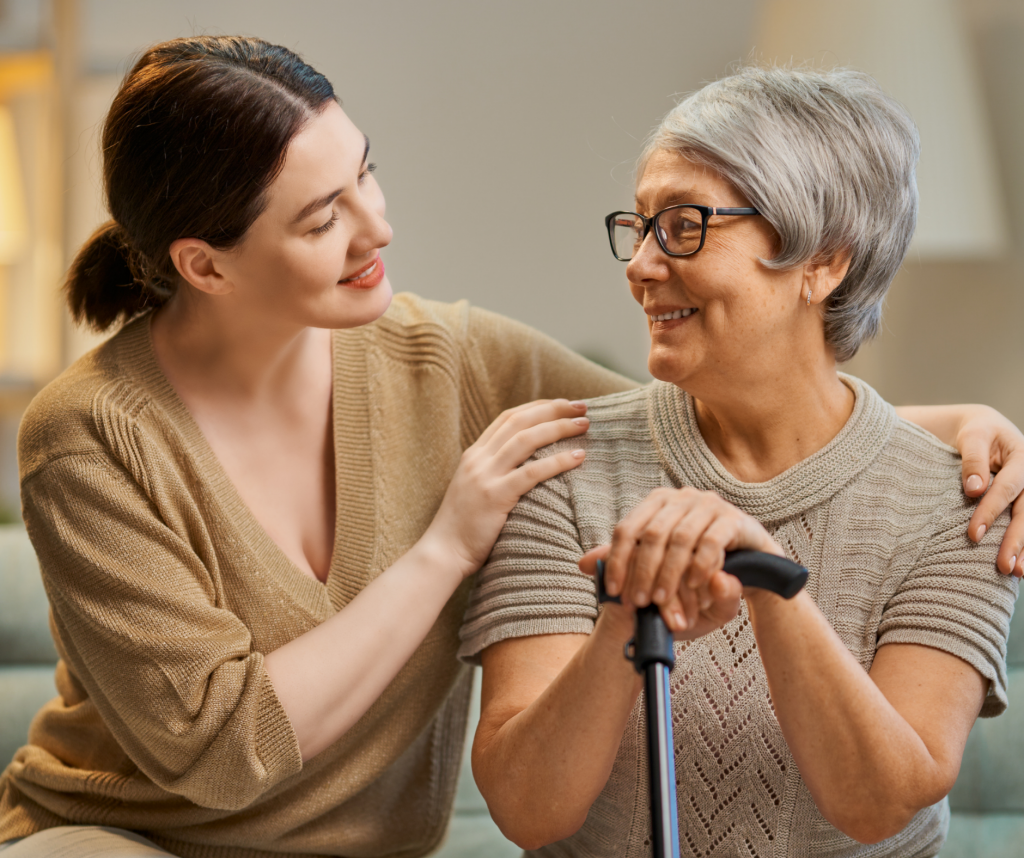
Tripping or falling over may not seem like a big deal, but for seniors, it can be catastrophic. Falls are the leading cause of both fatal and nonfatal injuries for people over 65, and one in four older Americans fall each year. Once you’ve fallen once, the chances of falling again are nearly double so it’s crucial to prevent it from happening the first time.
There are many reasons why seniors fall. Medical conditions, the home environment, poor balance, and lack of awareness all contribute to these incidents occurring. But there are many things that can be done to significantly lower the risk. In this article, we’ll outline 5 things you can do to help your parent avoid a fall.
Have a heart to heart
Many people think falls are a normal part of aging or that it won’t happen to them. It’s also common for seniors to limit their activity to avoid falls, when in fact activity is what helps maintain balance and coordination. Talking with your parent or loved one and dispelling the common myths and misconceptions about falls can help them be better educated and aware of the risks around them. You can also enlist the help of your loved one’s physician to help them understand the potential consequences of falls.
Cover the medical bases
There are many medical issues that can contribute to falls. Specific conditions like vertigo or neurological disorders can lead to dizziness and difficulty with balance, both of which increase the risk. Certain medications for other conditions can also cause those effects. Talk with your parent’s doctor if these effects are significant – they may consider trying alternatives.
It may seem obvious, but it can be easy to forget about the most basic medical issue that causes falls – poor eyesight. Your parent should have their eyes examined on a regular basis, as impaired vision greatly increases the chances of a fall.
Assess and make adjustments to the home
A major cause of falls is hazards in the senior’s own home. Getting rid of these is the simplest step toward making the home safer. Here are just a few things to look out for (via Mayo Clinic):
- Boxes, newspapers, electrical cords, and phone cords in walkways
- Coffee tables, magazine racks, and plant stands in high-traffic areas
- Loose rugs (should be secured with double-faced tape, tacks or a slip-resistant backing — or remove loose rugs from your home)
- Loose, wooden floorboards, and carpeting
- Clothing, dishes, food, and other necessities within easy reach.
- Spilled liquids, grease, or food.
Besides just removing common obstacles, you can take home safety a step further and make some proactive home modifications. Grab bars and handrails in bathrooms, a raised toilet seat and a shower seat are just a few assistive products you can install for fall prevention. Proper lighting is also crucial. Place a lamp within reach of the bed for middle-of-the-night needs, make clear paths to light switches that aren’t near room entrances, and consider using glow-in-the-dark switches.
If it’s possible, think about keeping the main living spaces on one floor and avoiding stairs. But if stairs are absolutely necessary, install tread on bare wood stairs and make sure handrails are secure.
Incorporate activities to improve balance
The aging process causes most seniors to lose some coordination, flexibility, and balance, making it easier to fall. Mayo Clinic explains: “Physical activity can go a long way toward fall prevention. With your doctor’s OK, consider activities such as walking, water workouts or tai chi — a gentle exercise that involves slow and graceful dance-like movements. Such activities reduce the risk of falls by improving strength, balance, coordination and flexibility.”
Getting physical activity is beneficial in many other ways. Check out this recent article on exercise to learn more.
Get the “gear”
It sounds simple, but even making changes to your parent’s footwear can help prevent them from falling. Look for a sturdy shoe with non-skid soles and be sure they fit properly. And while it doesn’t necessarily fall under the umbrella of “gear,” getting rid of loose clothing in favor of better-fitted outfits is also a good idea to prevent tripping.
You may want to consider assistive devices like a cane to help as well. Some seniors are resistant to using a cane or walker, fearing it signifies a loss of independence, so approach the topic delicately and with empathy.
Conclusion:
It can take some time and effort to take the necessary steps to prevent falls, but it’s worth it. In 2015, falls cost more than $50 billion. More importantly than the financial toll, falling can start a domino effect of health issues. And even falls without a major injury can cause an older adult to become fearful or depressed, making it difficult for them to stay active, according to the National Council on Aging.
If you aren’t able to help your parent or loved one with fall prevention, consider hiring a non-medical caregiver to help. Many of our caregivers are specifically trained in fall prevention through our Fall Prevention Specialty Program. They can help with transportation, medication reminders, keeping the house safe, and helping your loved one improve their balance through exercise – on top of their everyday duties like meal prep, companionship, and assisting with grooming and hygiene.
If you’d like to learn more about how we can help keep your parent safe at home, simply fill out this form and a client service specialist will be in touch at your convenience.